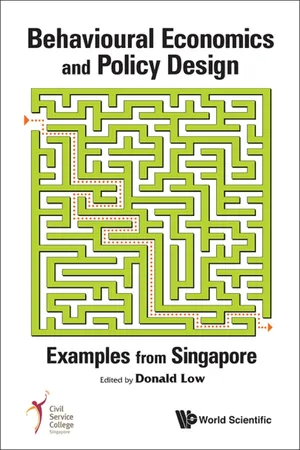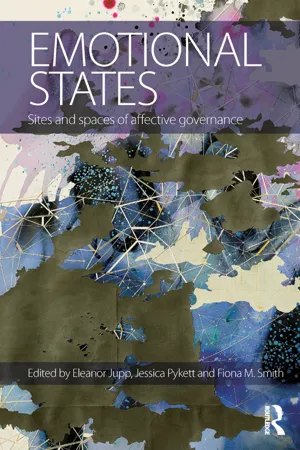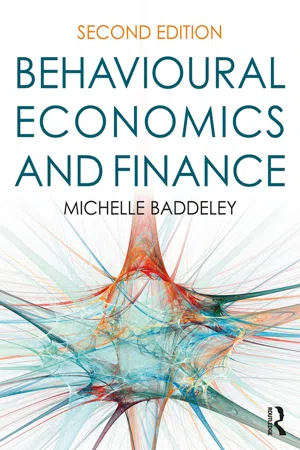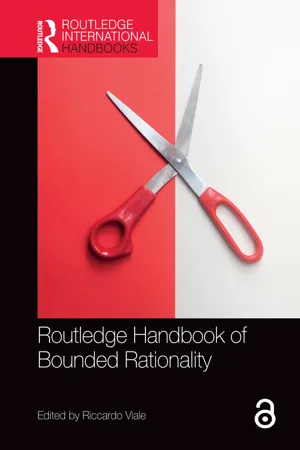Economics
Behavioural Economics and Public Policy
Behavioural economics and public policy examines how insights from psychology and behavioural economics can be applied to improve public policy. It focuses on understanding how individuals make decisions and how policies can be designed to account for these behavioural biases. By incorporating these insights, policymakers can create more effective and impactful interventions.
Written by Perlego with AI-assistance
Related key terms
6 Key excerpts on "Behavioural Economics and Public Policy"
- eBook - ePub
Behavioural Economics And Policy Design: Examples From Singapore
Examples from Singapore
- Donald Low(Author)
- 2011(Publication Date)
- WSPC(Publisher)
In the last thirty years or so, behavioural economics has emerged as a way of introducing insights from psychology into economics. Behavioural economics starts from the observation, borne out by numerous experiments, that individuals often deviate from strict rationality in systematic ways, not just arbitrarily or occasionally. This field of economics seeks to introduce more robust and realistic descriptive models of decision making and choice into standard economic theory. The implications of behavioural economics have not been lost on policymakers, and attention to the field has grown in academic and policy communities.Individuals often deviate from strict rationality in systematic ways, not just arbitrarily or occasionally.This chapter will first describe how economic theory, and in particular the rational choice model, has been applied in Singapore's public policy context. It then explains the challenge behavioural economics poses to the rational choice model, finally concluding with the implications of behavioural economics for public policy, particularly in Singapore's context.The Economic Foundations of Public Policy in Singapore
The Singapore government prides itself on its pragmatic and rational approach to public policy. Prime Minister Lee Hsien Loong once described Singaporean civil servants as “practis[ing] public administration almost in laboratory conditions”, referring to the environment that supports, “Singapore's ability to take a longer view, pursue rational policies, put in place the fundamentals which the country needs, and systematically change policies which are outdated or obsolete” (Lee 2005, p. 7). One manifestation of this rationality in government is in the application of economic principles to almost all areas of public policy.There are at least three main ways in which this is done. The first and most obvious is in the use of incentives to shape or change behaviour. People and firms are assumed to respond rationally to incentives. Lowering corporate tax rates will lead to higher levels of private investment, raising road usage charges will lead to fewer cars on the road, and increasing maternity and other parenthood benefits will result in an increase in birth rates. Getting incentives right is arguably one of the most important considerations in the design and implementation of public policy in Singapore. For instance, while the government subsidises healthcare expenses, it also requires that users co-pay a share of their medical bills. The primary consideration behind this policy is the concern that free healthcare will erode the incentive for users to exercise prudence and economise in their healthcare consumption decisions. Co-payment is seen as necessary to align the incentives of the patient and the payer (in this case, the government), and limit people's propensity to over-consume publicly subsidised services. - Gideon Keren, George Wu(Authors)
- 2015(Publication Date)
- Wiley-Blackwell(Publisher)
Public economics is the study of how government policies influence economic markets. A primary emphasis of public economics involves the topic of taxation. Given the increasing role of government policy on the health-care market, health economics has started to become intertwined with public economics, and we will discuss both fields in this section. Bernheim and Rangel (forthcoming) discuss the emergence of “behavioral public economics” and survey much of the key early literature in the area. Here we survey primarily recent field studies in this literature. Arguably the biggest impact that the behavioral approach has had in economics is in the analysis of retirement saving, particularly decisions of employees around 401k contributions. 1 A series of highly influential papers have documented that employees’ decisions about their retirement savings are strongly influenced by defaults and that employees show substantial inertia in their behavior (e.g., Carroll, Choi, Laibson, Madrian, & Metrick, 2009; Madrian & Shea, 2001). The seminal paper in this area (Madrian & Shea, 2001) emphasized the importance of psychological theories that can help explain the effects that they find. They discuss theories including procrastination, complexity and choice overload, status quo bias driven by the endowment effect, anchoring, and framing. When employees do make active choices, empirical research has identified that they use naive and often ineffective diversification strategies (Benartzi & Thaler, 2001; Choi, Laibson, & Madrian, 2009a). Many employees also fail to take advantage of clearly valuable employer-match opportunities in their 401k plans, even if these options are carefully explained (Choi, Laibson, & Madrian, 2011)- eBook - ePub
Emotional States
Sites and spaces of affective governance
- Eleanor Jupp, Jessica Pykett, Fiona M. Smith(Authors)
- 2016(Publication Date)
- Routledge(Publisher)
These efforts have been informed by research findings from the disciplines of behavioural economics, social psychology, marketing, design and neuroeconomics – as well as by the popularisation of such disciplines by books such as Nudge (Thaler and Sunstein, 2008). As a result, the ‘behaviour change agenda’ (Jones et al., 2013) has emerged as a catch-all term for adopting a behavioural science approach to public policy. Central to this agenda is a conceptualisation of human decision making simultaneously as a cognitive and non-cognitive process; our decisions are not limited to what is going on in our conscious and reflective minds, but are informed as much by our affective ‘moods’ and immediate contexts. ‘Changing behaviour’ relies on the development of new forms of emotional and psychological governance which target both the situations in which decisions are made and the emotional drivers of those decisions. The behaviour change agenda also changes the nature of policy making insofar as the forms of expertise and insight required in some senses are claimed to ‘re-humanise’ the policy making process. This means that policy makers themselves are required to collect behavioural insight on their target audiences/citizens, pay more attention to how policies will be implemented in light of apparently improved understandings of the human condition, and design policies which are emotionally informed (e.g. Dolan et al., 2010). This chapter investigates how policy makers are engaging with behaviour change knowledge, including how this engagement resonates with the emotional demands already placed upon them within their working lives in the public sector. In doing so, it considers this increasing influence of behavioural insights on the policy making process alongside the contemporary focus on workplace wellbeing, which is one sector in which theories from behavioural science have been mobilised to change workers’ behaviour and organisational cultures - eBook - ePub
- Michelle Baddeley(Author)
- 2018(Publication Date)
- Routledge(Publisher)
The problem for policy-makers in designing ‘scalable’ nudges, that is, nudges that positively affect as many people as possible, is that individual preferences and attitudes will be affected by differences in age, gender, education, socio-economic status and political affiliation. Nudges may not be easily scalable if it is difficult to nudge large segments of a population to change their behaviour. Political attitudes can be a particularly strong barrier. Costa and Kahn (2010) postulate that political opinions play a role reflected in rising polarization in environmental attitudes across political groups: they report that liberals and environmentalists are more responsive to environmental nudges than average and their econometric estimates indicate a 3–6% reduction in energy consumption in Democrat households, against a 1% increase in consumption in Republican households, which may reflect the fact that nudges encourage Republican households to use more energy either because they are “defiers” or because of a boomerang effect. Fairness can be incorporated into individual utility functions – for example see Fehr and Schmidt (1999) on inequity aversion – but turning these theoretical and philosophical questions into guidance for practical policy makers is difficult, especially as subjectivity is still problematic as the question remains of how to assign weights to inequity aversion. Distributive preferences cover accountability, efficiency, need and equality (Gowdy 2008). Equality raises moral questions and accountability implies that polluters should pay proportionally to emissions.More generally, given the growing influence of behavioural economics in policy-making, it is important for policy-makers to recognize not only behavioural economics’ insights but also its limitations. Sometimes, more traditional policies will be more effective in dealing with specific types of policy problem, for example traditional policy tools such as regulation and taxation might be better ways to encourage households and businesses to use energy more efficiently and/or to dissuade large retailers and manufacturers from exploiting impulsive, visceral reactions to food advertising and cigarette packaging. The key is a good balance between innovative but effective policy tools based on insights from behavioural economics alongside more traditional styles of policy-making.A final limitation is that nudging policy has not yet addressed pressing problems of macroeconomic decision-making. Nudging is based around changing individuals’ behaviour. It follows that behavioural insights have not found their way substantially into macroeconomic policies and systemic financial regulation. We will explore some of these macroeconomic policy-making issues in the chapters on macroeconomics and financial instability, explored in Part III.❖ CASE STUDY: BEHAVIOURAL POLICIES FOR AN ONLINE WORLDOne key area which needs new behavioural public policy designs is online privacy and security. People are not good at balancing risks is their online decision-making. Heuristics and biases – explored in Chapter 3 - eBook - ePub
- Riccardo Viale, Riccardo Viale(Authors)
- 2020(Publication Date)
- Routledge(Publisher)
In this chapter, I have argued that the principal overarching political economy of behavioural public policy should not be to focus upon moving internalities towards some conception of utility (or welfare or happiness) maximisation, but ought to rather be focused on fostering reciprocity and cooperation so that people are better equipped to flourish and find fulfilment in their lives. This proposed approach is in the spirit of the liberal economic tradition (albeit recognising that the individual’s conception of flourishing does not necessarily equate to consequentialist notions of utility, welfare or happiness), but goes somewhat further than that tradition specifies by recognising that giving people great freedom affords more opportunities for the egoistically inclined to use behavioural insights in order to manipulate people, and potentially impose harms on them. Thus, it is argued that when behavioural influences are being used by individuals or organisations towards self-serving and harmful ends, then there is a legitimate, intellectual justification for regulating against those activities. So, to sum up, the political economy of behavioural public policy proposed in this chapter has two arms: to nurture reciprocity so as improve the stock of human flourishing, and to regulate against harm-inducing egoism to protect the capacity of people to flourish as they themselves see fit.References
Akerlof, G. A., and Shiller, R. J. 2015. Phishing for Phools: The Economics of Manipulation and Deception. Princeton, NJ: Princeton University Press.Ariely, D., and Carmon, Z. 2000. Gestalt characteristics of experiences: The defining features of summarized events. Journal of Behavioral Decision Making 13: 191–201.Bentham, J. [1781] 1988. The Principles of Morals and Legislation. New York: Prometheus Books.Bowles, S. 2016. The Moral Economy: Why Good Incentives Are No Substitute for Good Citizens. New Haven, CT: Yale University Press.Camerer, C., Issacharoff, S., Loewenstein, G., O’Donoghue, T., and Rabin, M. 2003. Regulation for conservatives: Behavioral economics and the case for ‘asymmetric paternalism’. University of Pennsylvania Law Review 1151: 1211–1254.Conly, S. 2013. Against Autonomy: Justifying Coercive Paternalism. Cambridge: Cambridge University Press.Fredrickson, B. L., and Kahneman, D. 1993. Duration neglect in retrospective evaluations of affective episodes. Journal of Personality and Social Psychology - eBook - ePub
Psychology and Behavioral Economics
Applications for Public Policy
- Kai Ruggeri, Kai Ruggeri(Authors)
- 2021(Publication Date)
- Routledge(Publisher)
But that value can be contained to a short window, and frankly, many nudges simply do not have lasting impacts on behaviors or related outcomes. This may be due to researchers missing out on identifying or addressing the root explanations for the issues (Loewenstein & Chater, 2017). That is perhaps a double-edged sword, though, as this quick and dirty aspect is also an appealing aspect of nudges (Loewenstein & Chater, 2017). As such, the next level is to determine how long other methods might have sustained a change along with how long the benefits are relevant from the first level – being nudged into a retirement plan therefore has long-term implications, even if the behavior is necessary only once. Finally, the cumulative effects of those impacts, their longevity, and their reach are the ultimate level at which it can be determined if, how, and to what extent the use of behavioral insights is valuable to individuals and populations. This is not to say that such approaches should be seen as a replacement for traditional policy tools, but they should be seen as a powerful complement to those that may already be in place (Loewenstein & Chater, 2017).Conclusion
This chapter – and the entire body of work preceding it – has attempted to present clearly the value of evidence in policy, the potential for psychology and behavioral economics as powerful policy tools, and the opportunities for such tools to impact well-being across entire populations. We opened by presenting the history and features of policy, followed by systematic approaches to development and (later) evaluation. We covered the major topics, people, and theories that led to the widespread interest in behavioral economics in science and beyond. Six chapters presented critical policy domains where behavioral approaches to policy have been evaluated. In each of these, we presented both highly cited and lesser known examples, including those with significant impacts and some yet to be assessed. These examples are intended not only to inform but to catalyze further innovations where appropriate, as they offer incredible value as levers as described in the introduction. To conclude the volume, this chapter discussed what it means for policies to have an impact. We then calibrated what we meant by “impact” to have some clarity about the ultimate outcome to be targeted. While we strongly endorse this to be securing and advancing population well-being, it would not be appropriate to ignore vital aspects such as personal safety and security, as well as various forms of stability, which must be in place for populations to develop and flourish. Without question, these must include political, economic, and environmental.
Learn about this page
Index pages curate the most relevant extracts from our library of academic textbooks. They’ve been created using an in-house natural language model (NLM), each adding context and meaning to key research topics.





